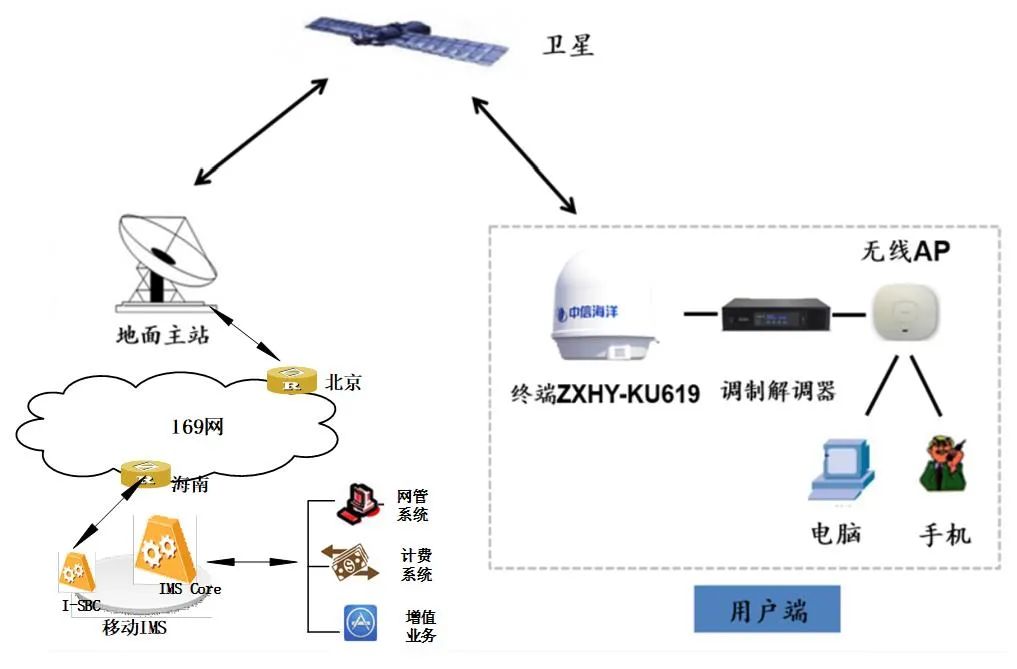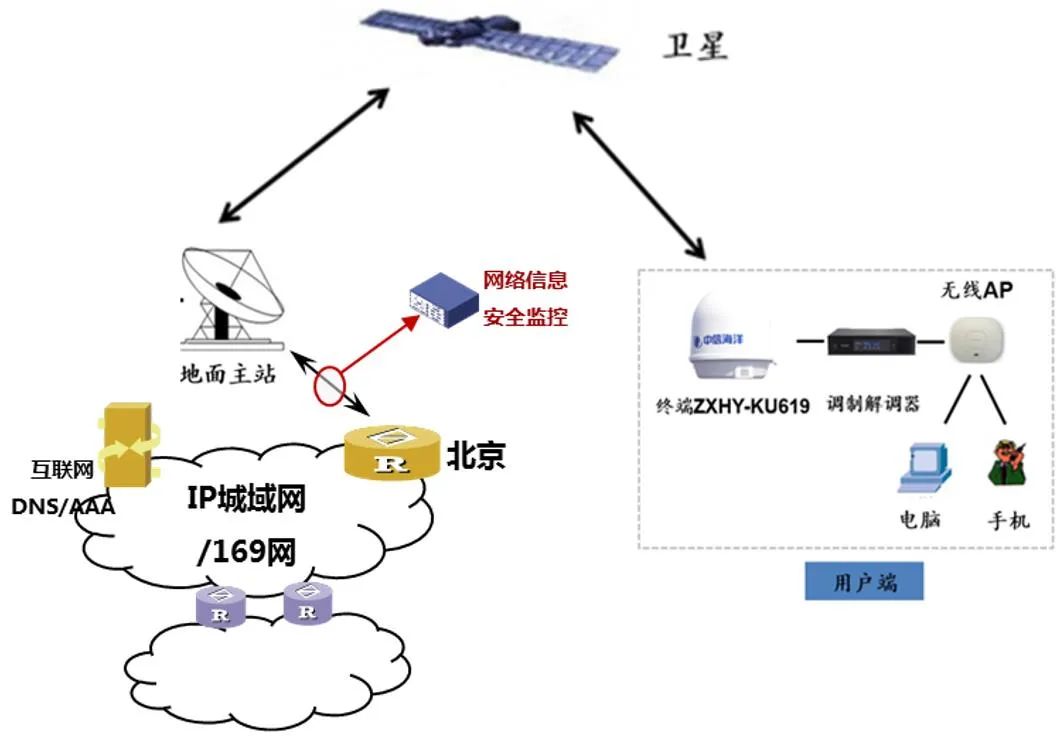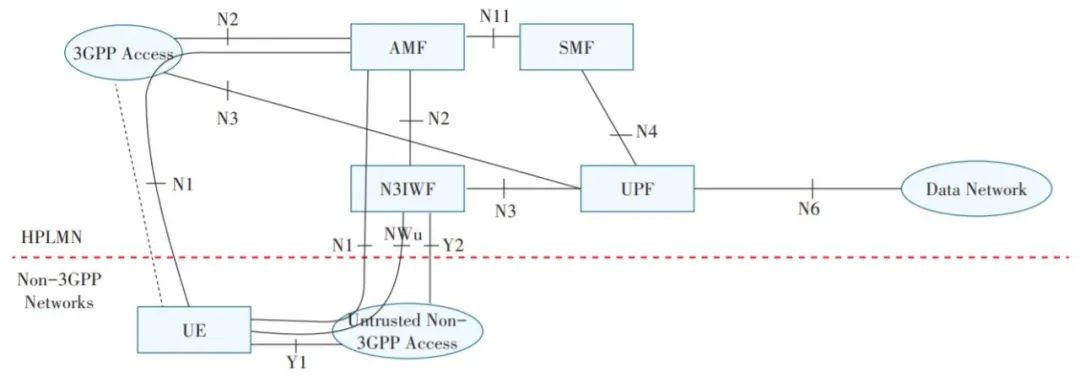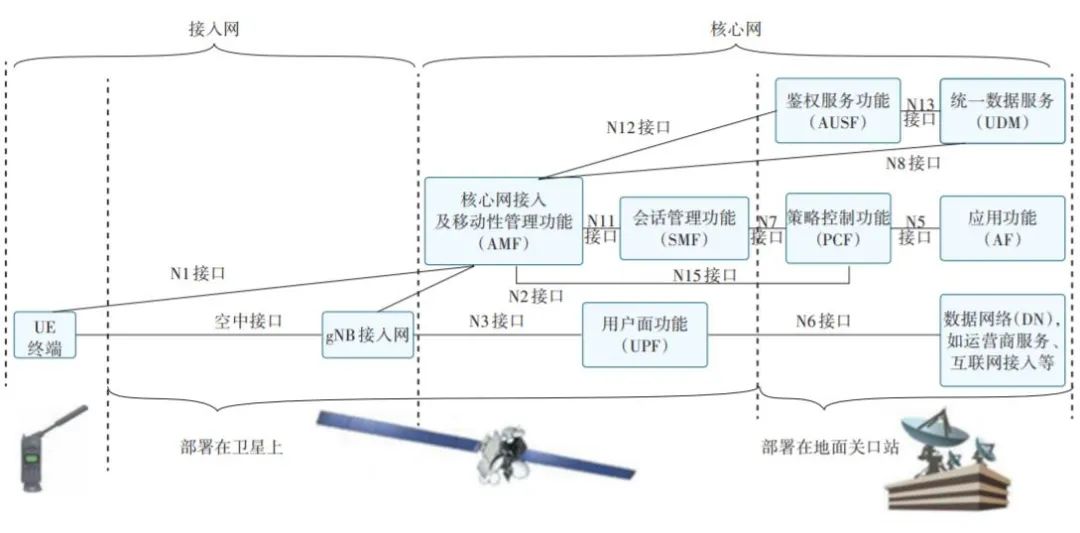This article is authorized for publication by “Postal and Telecommunication Design Technology”.
If you need to reprint, please contact “Postal and Telecommunication Design Technology” for authorization.
Follow the Postal and Telecommunication Design Technology public account: ydsjjs, welcome to follow!
Abstract: This article reviews the development history of satellite communication, its advantages and disadvantages, and proposes five connotations and levels of integration between satellite communication and 5G communication. Taking the “Hainan Integrated Communication” application of a certain Unicom company as an example, it discusses the preliminary ideas, networking architecture, and key technical analysis of the integration of satellite communication and 5G.
Introduction
In the 4G era, although telecom operators’ mobile networks covered 90% of the global population, they covered less than 20% of the global area. Compared to 4G, 5G has significant improvements in speed, connection numbers, and latency, mainly addressing three core application scenarios: enhanced mobile broadband (eMBB), massive machine-type communication (mMTC), and ultra-reliable low-latency communication (uRLLC). The enhancements of 5G over 4G LTE are comprehensive, achieving diversity in access types.
The vast majority of communication satellites globally are primarily GEO satellites. Due to varying distances, different heights of satellites result in different latencies. Data transmission latency for geostationary satellites is about 500 ms, while low-earth orbit satellites can significantly reduce latency to under 50 ms, comparable to terrestrial fiber networks. This also allows support for real-time data transmission applications like online gaming or video chatting, meeting the needs of most 5G scenarios except for some ultra-low latency cases.
To achieve the vision of the Internet of Everything, satellite communication plays an important role. The integration of satellite communication and 5G will be significant in emergency rescue, wide-area coverage in uninhabited areas, intelligent shipping, marine ranching, unmanned vessels, smart shipping, maritime monitoring, and defense applications.
Advantages and Disadvantages of Satellite Communication
Communication satellites can be classified into geostationary satellites and non-geostationary satellites based on their orbits. Non-geostationary satellites can further be divided into low earth orbit satellites (500-3,000 km), medium earth orbit satellites (3,000-10,000 km), and high earth orbit satellites (above 10,000 km).
In December 1958, NASA launched the “SCORE” broadcasting experimental satellite, marking the beginning of satellite communication. Early satellite communications were mainly for military purposes. In July 1962, AT&T launched the “TELESTAR-1” low earth orbit satellite, achieving telephone and television services across the Atlantic, laying the technical foundation for commercial satellites. By the 1990s, Motorola proposed the Iridium project, consisting of 77 near-earth satellites to provide mobile communication services globally, allowing users to call from anywhere in the world. Although it ultimately failed due to the rapid development of mobile communications, it provided valuable lessons for global satellite networking, especially for the current “Starlink”.
Starlink is a project of SpaceX, planning to consist of about 12,000 satellites (of which 1,584 will be deployed in low earth orbit at an altitude of 550 km) to provide low-cost internet connectivity globally.
Satellite communication has the following significant advantages:
a) Long communication distances and wide coverage; geostationary satellites can communicate over distances of up to 18,000 km, covering 42.5% of the Earth’s surface area.
b) Operates via broadcasting, allowing any point within the satellite antenna beam coverage to set up a ground station, enabling bilateral or multilateral communication, i.e., multi-address communication.
c) Large communication capacity, suitable for various business transmissions. Satellite communication uses microwave bands, allowing for a wide frequency range. The bandwidth of C and Ku band satellites can reach 500-800 MHz, while the Ka band can reach several GHz.
d) Flexible and mobile wide-area networking capabilities; the high power density and flexible multi-point beam capabilities of satellite communication, combined with on-board switching processing technology, provide high efficiency and flexibility for the composition of communication networks.
e) Not affected by ground disasters or severe weather; in the face of earthquake relief or international submarine cable failures, satellite communication is an unparalleled important means of communication.
However, satellite communication also has its disadvantages, mainly in the following aspects:
a) Large transmission delay; in geostationary satellite communication systems, the maximum distance from the communication station to the geostationary satellite can reach 40,000 km, resulting in a one-way transmission time of about 0.27 seconds at the speed of light (3×10^8 m/s).
b) Difficulties in achieving satellite communication in high-latitude areas.
c) Satellites operate in harsh conditions in space, experiencing sun outages, eclipse effects, and rain fade.
d) The success rate of satellite launches is 80%, with satellite lifespans ranging from a few years to over a decade; developing satellite communication requires long-term planning and the risk of launch failures.
Classification of Satellite and 5G Integrated Communication
The process of integrating satellite communication and 5G is not achieved overnight; it requires phased implementation. Based on the order of implementation and difficulty, it can be divided into the following five levels:
a) Coverage integration: Satellite networks and 5G networks use different technical standards, operating independently. Satellites supplement coverage for ground wireless base stations, primarily for sparsely populated wide-area coverage.
b) Service integration: Both remain independently networked but can provide the same or similar service quality, achieving consistent levels in certain service QoS indicators.
c) User integration: Ensures users do not need to change cards or numbers, using the same user identity (code number) with unified billing rules, allowing the network to choose to utilize satellite or ground networks for service as needed.
d) System integration: Adopts the same architecture, transmission, and switching technologies, allowing user terminals, gateways, or satellite payloads to extensively utilize ground network technological achievements.
e) System fusion: The satellite-ground composition forms a whole, providing users with seamless consistent services, utilizing coordinated resource scheduling, consistent service quality, and seamless roaming between satellite and ground.
Currently, from the perspective of demand development and the 5G NTN work conducted by organizations like 3GPP, the current design goal is at least to achieve level 4 system integration.
Integration Applications of Satellite Communication and Mobile Communication
The Hainan Integrated Communication project achieves level 2 service integration, providing users with the same call quality in both land and marine scenarios through VoWiFi technology.
Satellite communication is currently the best means of communication at sea; however, satellite communication equipment is relatively expensive (ranging from thousands to tens of thousands), and communication costs are high (for the cheapest maritime satellite phone, there is no distinction between caller and receiver, and charges are based on minutes: 1.6 yuan per minute in China and 6.8 yuan per minute internationally). Therefore, very few individuals own satellite phones, which are usually purchased and used by enterprises. To control production costs, enterprises strictly limit the use of satellite phones, and employees are not allowed to use them in non-emergency situations. In the absence of effective communication means, people endure the pain of long-term disconnection from friends and family, and even in emergencies, they cannot timely send distress signals, leading to serious loss of life and property.
To address the pain points of maritime communication and the current high costs of satellite calls, operators can collaborate with satellite companies to meet the needs of fishing boat users for making and receiving calls at sea based on satellite channels, while also providing internet services. When fishermen come ashore, they can use the same mobile calling and internet services as onshore users.
The voice call process for fishermen at sea mainly includes the following steps:
a) Satellite receiving terminal (ZXHY-KU619) receives satellite signals on the fishing boat, creating a WiFi environment on the boat.
b) Users access the ground station in Beijing via the satellite channel.
c) The satellite ground receiving station connects to a certain Unicom company in Hainan through a dedicated line from Beijing.
d) Finally, it connects to the mobile IMS via I-SBC to achieve VoWiFi calling.

Figure 1: Schematic Diagram of Fishermen Making VoWiFi Calls at Sea
The process for fishermen to access mobile internet at sea mainly includes the following steps:
a) Satellite receiving terminal (ZXHY-KU619) receives satellite signals on the fishing boat, creating a WiFi environment on the boat.
b) Users access the ground station via satellite channels, connecting to the public internet through dedicated internet lines from ground stations.
c) The internet access service is routed locally after DNS addressing by the operator.
d) The operator is responsible for monitoring internet information security.

Figure 2: Schematic Diagram of Fishermen Accessing the Internet at Sea
Hybrid Networking Solutions for Satellite and 5G
Starting from R14, 3GPP has begun research on satellite-ground integration. In TS 22.261, it discusses the roles and advantages of satellites in 5G systems, emphasizing that as one of the multiple access technologies in 5G, satellites have significant advantages in industrial application scenarios requiring wide-area coverage.
To enable access for Non-3GPP users like satellites, 3GPP has added the N3IWF network element in the 5G network architecture to realize protocol mapping for user authentication and user plane routing. The specific routing for Non-3GPP user access to 5G is shown in Figure 3.

Figure 3: 3GPP Added N3IWF for Non-3GPP Access
Currently, from the perspective of the business composition of satellite networks, intercommunication with ground networks still occupies a major share. In the short term, satellite networks will continue to operate primarily in transparent forwarding mode. In the long term, research on satellite and 5G architectures will mainly focus on user access and service continuity during satellite forwarding, specifically addressing the following issues:
a) How to achieve a unified air interface with 5G, enabling seamless access for 5G users under both satellite and 5G networks.
b) Low and medium earth orbit satellites operate at particularly high speeds, and a single satellite can only provide service to users for a few to tens of minutes; in high-speed motion, how to achieve handover and ensure service continuity.
The evolution of a unified air interface for satellites and mobile communications began early. The early MSAT system used ground-simulated cellular network technology; the Thuraya system adopted a GMR standard similar to GSM/GPRS during its design; the air interface of low earth orbit satellite constellations like Iridium and GlobalStar was based on GSM and IS-95. The Imarsat-4 satellite system utilized IAI-2 standards and the S-UMTS standard issued by ETSI was based on the WCDMA framework. The Tiantong-1 satellite launched in 2016 also partially adopted 3GPP standards in its air interface design.
In the 5G era, the use of small base station technology makes it possible to deploy 5G base stations on satellites, achieving a consistent air interface for air-ground communications, and utilizing inter-satellite networks to transmit IP-based service and signaling to the core network.
The core network in the 5G era adopts an NFV architecture, achieving separation of CU and DU. The user plane processing network element in the core network is UPF. By utilizing NFV technology, UPF network elements can be deployed on satellites, enabling the forwarding of user data traffic. The future hybrid networking architecture for satellite and 5G communication is shown in Figure 4.

Figure 4: Hybrid Networking Architecture for Satellite and 5G Integration
Core network functions can also be separately deployed on satellites; however, due to limitations in satellite power, processing capabilities, and long latency in satellite-ground links, and considering the limited size, capacity, and storage resources of satellites, it is not advisable to place all core network functions on satellites.
Conclusion
In the future, similar integrated services like Hainan Integrated Communication will increase, and the integration of satellite communication is also one of the future trends of 5G development. This article introduces the advantages and disadvantages of satellite communication and proposes five levels of integration between satellite communication and 5G, using the Hainan Integrated Communication project as a starting point to introduce future research focuses and hybrid networking architecture requirements for satellite and 5G communication, providing a reference for subsequent deployment studies in related fields by operators and industry.
▍References:
[1] Wang Jun, Yang Jinpei, Liang Weitai, Mao Xiaobin. Ideas on the Construction of Integrated Network Information System [J]. Command Information Systems and Technology, 2016 (04): 59-65.
[2] Cao Zhonghui. A Brief Analysis of IoT Technology Development and Application from the Perspective of Operators [J]. Mobile Communication, 2016 (15): 30-35.
[3] Liu Yunhao. Introduction to the Internet of Things [M]. Science Press, 2010.
[4] Wu Chuanjun. Key Technologies and Challenges of IoT Security [J]. Cryptography Journal, ISSN 2095-7025, 2015, 2(1): 40-53.
[5] Zhao Mingyu, Yan Xueqiang. Research on the Application of SDN and NFV in 5G Mobile Communication Network Architecture [J]. Mobile Communication, 2015 (14): 64-68.
[6] You Xiaohu, Pan Zhiwen, Gao Xiqi, Cao Shumin, Wu Hequan. Development Trends and Key Technologies of 5G Mobile Communication [J]. China Science: Information Science, 2014, 05: 551-563.
▍Author Introduction:
Zhou Deshan, Engineer, Master’s degree, mainly engaged in consulting and design work related to core networks;
Huang Guidong, Senior Engineer, Master’s degree, mainly engaged in consulting and design work related to core networks;
Wang Yan, Engineer, Bachelor’s degree, mainly engaged in core network construction work.



